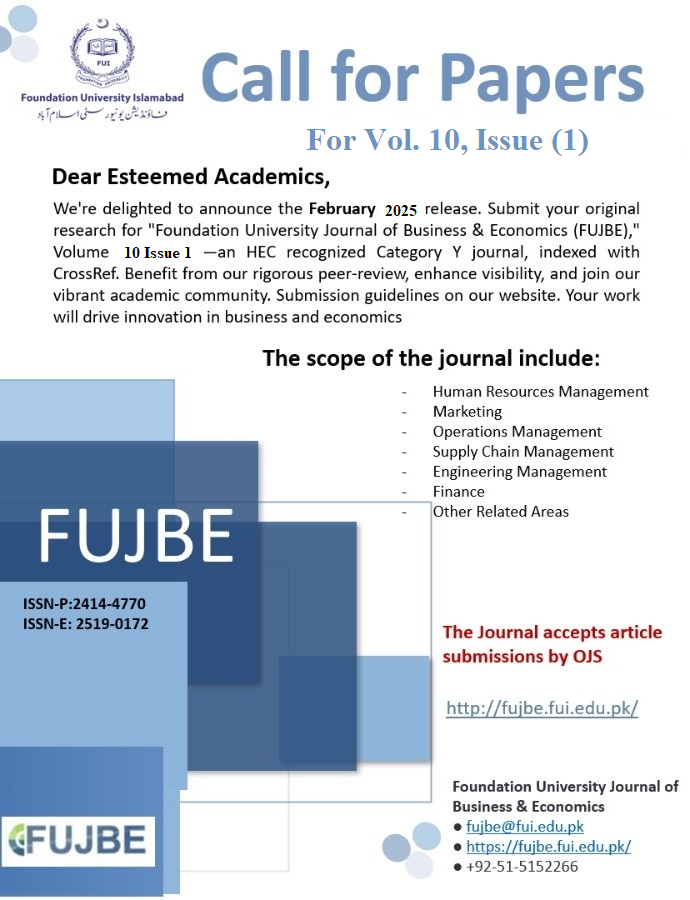Pakistan's Economic Growth Restraints: The Three-Gap Model
DOI:
https://doi.org/10.33897/fujbe.v8i1.704Keywords:
foreign exchange gap, net transfers, foreign direct investment, public savings, taxes, government borrowing, generalized method of moments.Abstract
Almost all the developing economies are confronted with three gaps which are termed as
foreign exchange, savings-investment and fiscal gap. These gaps constrain the economic
growth. Pakistan is also one of such developing economies and substantially facing three gaps
in its economy. In order to observe the effect of these gaps on economic growth, we have used
time series data ranging from 1980 to 2019. In the foreign exchange constrained growth
findings show that an increase in investment opportunity, growth rate of potential GDP and a
stable exchange rate will reduce the current account deficit there by increasing the growth rate
of potential GDP. In the saving constrained growth findings show that an increase in tax
revenue will increase the public savings reducing the saving-investment gap which will
accelerate the potential GDP's growth rate. In the fiscal constrained growth finding show that
public investment crowds in private investment, as private investment increases tax revenue
will increase thereby reducing the fiscal gap. Higher tax revenue and public borrowing increase
the growth rate of potential GDP.



